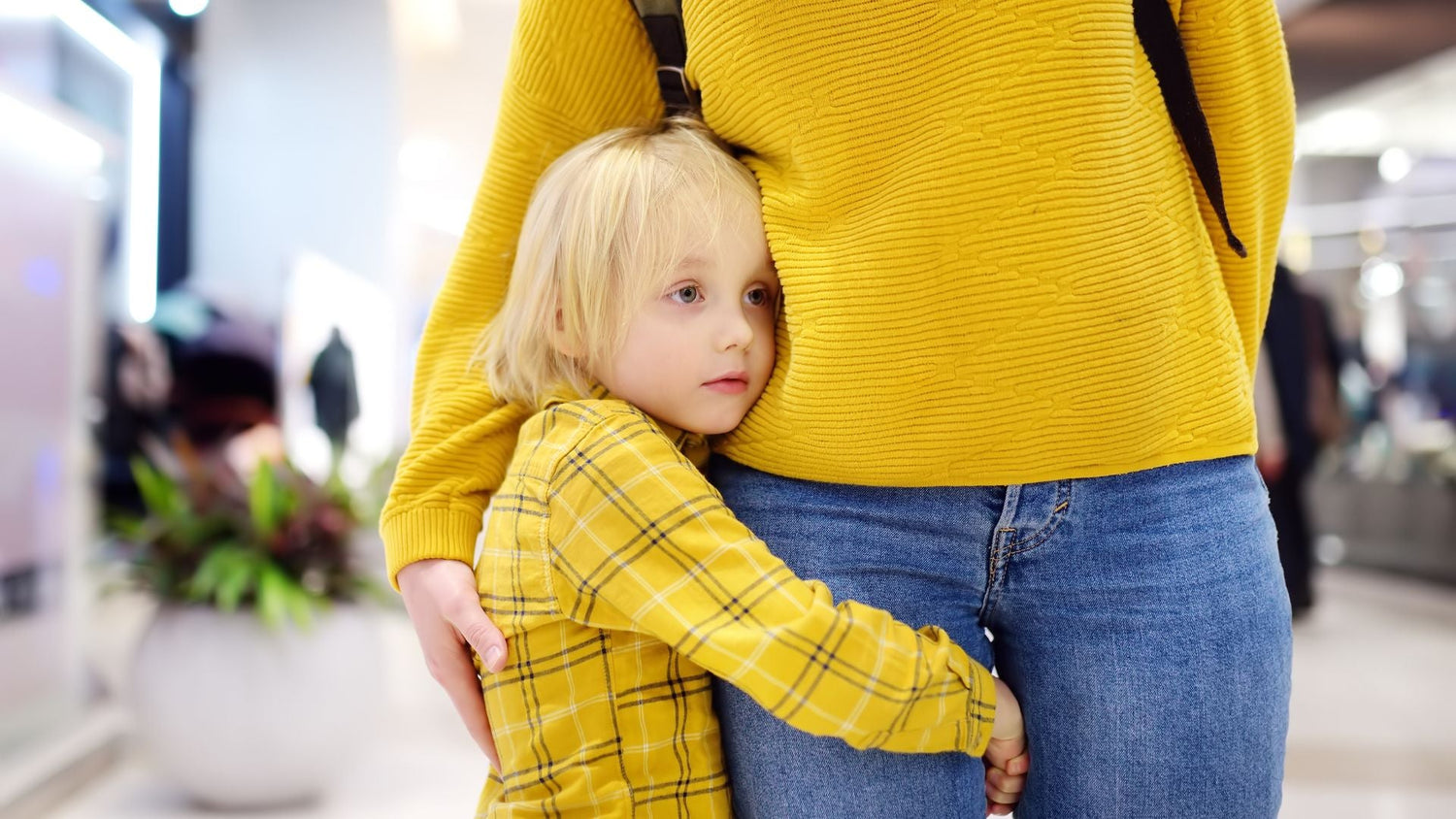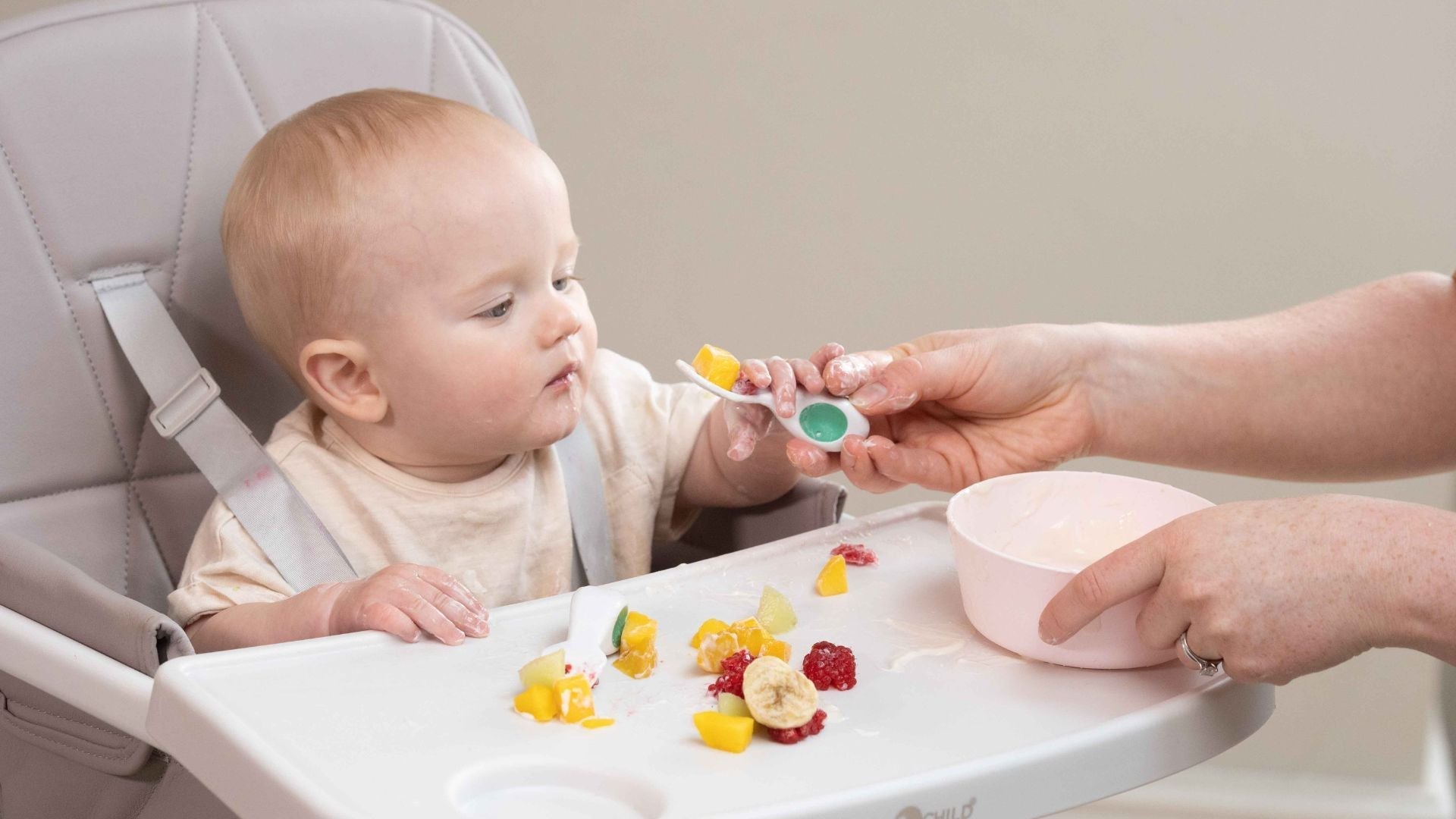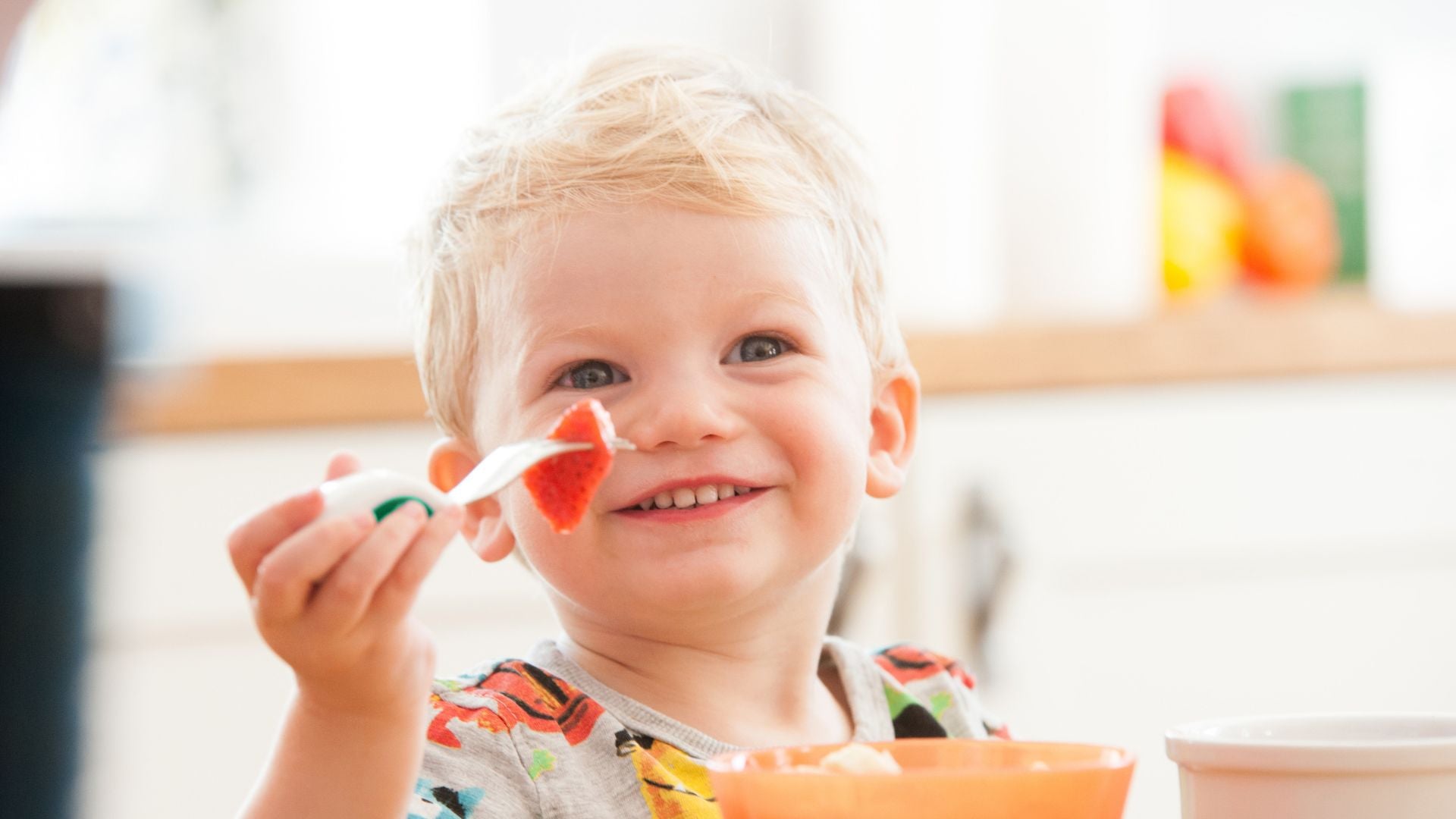Those heart-wrenching cries at nursery drop-off. The tiny arms clinging to your leg as if you're about to vanish forever. The tearful face pressed against the window as you leave. If any of these scenarios sound painfully familiar, you're likely dealing with separation anxiety – a perfectly normal, albeit challenging, phase of your little one's development.
As parents and caregivers, it's completely natural to feel a mix of emotions when your toddler dissolves into tears at the mere thought of you leaving. Perhaps a twinge of guilt (am I doing something wrong?), a dash of frustration (we're already running late!), or even a splash of secret joy (they really do love me that much!). Whatever you're feeling, know that you're not alone in navigating these choppy emotional waters.
In this guide, we'll explore what's really happening when your toddler seems suddenly attached to you like a tiny, emotional shadow. We'll look at why this happens, what it means for your child's development, and most importantly, how you can support them (and yourself) through this phase with compassion, understanding, and practical strategies that actually work in real-life situations – whether that's at mealtimes, bedtime, or the dreaded daycare drop-off.
Understanding separation anxiety
Separation anxiety isn't just a parenting challenge; it's actually a significant developmental milestone. When your little one cries as you leave, it's a sign that their emotional and cognitive development is right on track – even if it doesn't feel particularly convenient at 8:30 on a Monday morning when you're already late for work.
So what exactly is happening in that growing toddler brain? Between approximately 18 months and 3 years of age, children begin to truly understand that they're separate individuals from their parents or primary caregivers. This realisation is both exciting (I'm my own person!) and terrifying (But I need you to keep me safe!). Your toddler is gradually developing what psychologists call "object permanence" – the understanding that things (and people) continue to exist even when they can't be seen or heard.
For many toddlers, this developmental leap creates a paradox: they're simultaneously pushing for independence ("I do it myself!") while also experiencing intense anxiety about being separated from you. This contradiction can be particularly evident during everyday activities like mealtimes, where your little one might insist on feeding themselves but become distressed if you step away from the table.
The peak of separation anxiety typically occurs around 18-24 months, though every child follows their own timeline. For some, it might begin earlier and resolve quickly; for others, it might emerge later and linger longer. What's important to remember is that this anxiety isn't a reflection of poor parenting or a sign that something is wrong with your child's emotional development – quite the opposite! It's a healthy sign of the strong attachment bond you've created together.
Understanding this developmental context can transform how we respond to clingy behaviour. That desperate grip on your clothing isn't manipulation or misbehaviour – it's your child's way of communicating a genuine emotional need for security during a time when they're becoming increasingly aware of the big, sometimes overwhelming world around them.
Signs and symptoms of separation anxiety

Recognising separation anxiety in your toddler isn't always as straightforward as the dramatic nursery drop-off scene. While some children might clearly articulate "Don't go!" or burst into tears when separation is imminent, others might display their anxiety in more subtle or seemingly unrelated ways.
Emotional signs
Emotional signs often appear first and can be the most obvious. Your previously independent explorer might suddenly transform into your constant companion, following you from room to room like a tiny shadow. Clinginess tends to intensify during transitions or when your child senses you're preparing to leave. This might manifest as your toddler wrapping themselves around your leg, demanding to be picked up constantly, or becoming visibly distressed when you're out of sight – even if you've just popped to the loo for what was supposed to be a moment's peace!
Behavioural changes
Behavioural changes can sometimes be more perplexing. Your good sleeper might suddenly fight bedtime with unprecedented determination or wake multiple times asking for reassurance that you're still there. Mealtime routines that were previously going smoothly might become battlegrounds, with your toddler refusing to sit in their chair unless you're within arm's reach. Some children might even regress in certain skills, temporarily abandoning their newfound independence with utensils in favour of being fed, just to keep you close.
Other toddlers express their anxiety through increased tantrums, particularly around transition times or when they're tired. These emotional outbursts aren't manipulation tactics – they're genuine expressions of feeling overwhelmed by emotions too big for their developing regulation skills.
Physical symptoms
Physical symptoms sometimes accompany separation anxiety too. Some children complain of tummy aches or headaches, particularly on nursery days or when a caregiver is scheduled to leave. Sleep pattern changes are extremely common, as are changes in appetite or eating habits. You might notice your previously adventurous eater a fussy eater or more reluctant to try feeding themselves, especially if mealtimes have become associated with anxiety.
What makes identification particularly challenging is that these symptoms often fluctuate or appear inconsistently. Your toddler might be perfectly happy to wave goodbye one day, then dissolve into tears the next, leaving you wondering what changed. This inconsistency is actually perfectly normal – their confidence in handling separation ebbs and flows as they practice this new emotional skill.
Recognising these varied expressions of anxiety allows us to respond with empathy rather than frustration, understanding that these behaviours are your child's way of communicating genuine emotional needs during a significant developmental transition.
Effective strategies for managing separation anxiety

Navigating separation anxiety requires a thoughtful approach that balances empathy for your child's genuine distress with gentle encouragement toward independence. The good news? There are proven strategies that can transform tearful goodbyes into confident waves – without dismissing your toddler's very real emotions.
Preparation makes all the difference
Children thrive on predictability, especially during times of emotional uncertainty. Before any separation, clearly explain what will happen in simple, positive language: "Mummy's going to work while you play with your friends at nursery. I'll always come back to get you after naptime." For younger toddlers, keep the timeframe concrete rather than abstract – "after snack time" makes more sense than "in three hours." Some families find that visual schedules with pictures representing daily routines help toddlers understand what to expect and when reunion will happen – seeing familiar activities like snack time, storytime, or outdoor play can provide reassurance that their day has a predictable structure.
Gradual separation
If possible, introduce new caregivers or environments incrementally. For instance, before starting nursery full-time, arrange shorter visits where you initially stay with your child, then gradually increase the length of time you're away. This approach gives your toddler the chance to build trust in new surroundings while feeling secure in the knowledge that you always return.
Develop goodbye rituals
Consistency in farewells creates security even amidst emotional turbulence. Your ritual might include a special handshake, three kisses and a squeeze, or a specific phrase like "See you later, alligator!" Whatever you choose, keep it brief, warm, and consistent. Once you've completed your goodbye ritual, it's generally best to leave promptly rather than prolonging the farewell, which can actually increase anxiety for many children.
Comfort objects
Many children benefit from having something tangible that represents connection with you during separations. This might be a favourite soft toy, a family photo, or even a scarf with your familiar scent.
Practice separation during daily activities
Even when you're at home together, create opportunities for your child to practice being contentedly engaged while you're nearby but not directly involved. Something as simple as preparing dinner while they play independently in the same room can build their confidence in being "separate together." Start with brief periods and gradually extend the time as their comfort grows.
Focus on the reunion
When you return, make that moment special by giving your full attention to greeting your child warmly. This positive reinforcement helps solidify their understanding that separations are temporary and always end with your return. However, don't be surprised if your toddler sometimes seems angry or ignores you upon reunion – this is actually a normal response and their way of expressing "I missed you and that was hard!"
Remember that consistency is key – both in your approach to separations and in how you respond to your child's distress. By acknowledging their feelings while gently encouraging independence, you're teaching valuable emotional skills that extend far beyond this temporary phase.
How not to manage separation anxiety
In the messy reality of parenting – where we're often juggling multiple responsibilities while running on too little sleep – it's easy to fall into approaches that seem expedient but might actually intensify separation anxiety. Understanding what doesn't work can be just as valuable as knowing what does.
Sneaking away
Sneaking away when your child is distracted might seem like a kindness, sparing you both the tears of goodbye. In reality, this approach can backfire dramatically. When children discover you've disappeared without warning, it can heighten their anxiety and erode trust. Even if it triggers tears in the moment, a consistent, loving goodbye ritual communicates respect for your child's feelings and reinforces the important message that you'll always let them know before you leave – and you'll always come back.
Dismissing or minimising feelings
Comments like "Don't be silly" or "Big kids don't cry" might stem from our desire to help children move past difficult emotions, but they often have the opposite effect. When we acknowledge feelings instead – "I see you're feeling sad about saying goodbye" – we help children develop emotional literacy and feel understood, even when the separation still needs to happen.
Inconsistent responses
If sometimes you allow your child to avoid situations that trigger anxiety and other times you insist they participate, they receive confusing messages about their capabilities and your expectations. While flexibility is important, maintaining a general consistency in approach helps children develop secure expectations.
Prolonged goodbyes
When farewells drag on with multiple "just one more hug" moments, children often become more distressed rather than less. A warm, loving goodbye ritual that happens once and is followed by a confident departure usually results in quicker recovery for upset toddlers.
Over-reassurance
Repeatedly telling a child "There's nothing to worry about" may actually signal that perhaps there is something concerning about the situation. Instead, matter-of-fact confidence – "You're going to play with your friends, and I'll pick you up after naptime" – communicates your belief in their ability to handle the separation.
Comparing children
Whether to siblings, peers, or even to how they themselves behaved previously – rarely motivates positive change. Each child processes separation at their own pace, and comparisons can create unnecessary pressure or shame.
The most counterproductive approaches often stem from our own discomfort with our children's distress. When we rush to "fix" their upset feelings, we may inadvertently communicate that these emotions are too big or too uncomfortable to be experienced. Instead, acknowledging their feelings while maintaining appropriate boundaries helps toddlers develop emotional resilience – a skill that serves them far beyond this temporary phase of separation anxiety.
When to seek additional support
While separation anxiety is a normal developmental phase for most toddlers, there are situations where additional professional support might benefit both you and your child. Recognising the difference between typical anxiety and more serious concerns empowers you to seek appropriate help when needed.
Consider reaching out to a healthcare provider if your child's separation anxiety:
- Persists with high intensity for several months without improvement, despite consistent use of supportive strategies.
- Significantly interferes with daily functioning to the point where your child cannot participate in age-appropriate activities like playgroups, nursery, or even family gatherings after a reasonable adjustment period.
- Involves intense physical symptoms such as recurring vomiting, severe sleep disturbances lasting weeks or months, or refusal to eat when separated.
- Extends beyond separation to include excessive worries about other aspects of daily life, extreme reluctance to try new experiences, or fearfulness that seems disproportionate across multiple situations.
- Creates significant family disruption that affects parents' ability to work, maintain relationships, or manage household responsibilities over an extended period.
If you're concerned, your first point of contact is typically your GP, who can help determine whether your child's anxiety falls within typical developmental parameters. These professionals can provide reassurance for normal developmental anxiety or refer you to specialists if needed.
Remember that seeking help isn't an indication of parenting failure – quite the opposite. It demonstrates your commitment to supporting your child's emotional wellbeing and providing them with whatever tools they need to thrive. Many families find that even a few sessions with a knowledgeable professional can provide strategies that significantly improve the situation for everyone involved.
Trust your parental instincts. You know your child better than anyone else, and if something feels significantly different from typical developmental challenges, it's always appropriate to seek professional guidance for reassurance and support.
Comforting children missing a parent

Separation anxiety can take many forms beyond the everyday comings and goings of work and childcare. Whether navigating co-parenting arrangements after separation, managing a parent's work travel, or coping with longer absences due to military deployment or other circumstances, children often need special support when missing a parent who isn't present daily.
Create concrete connections across households
For younger toddlers who don't fully understand time concepts, traditional calendar countdowns can be abstract and sometimes anxiety-producing. Instead, try more concrete representations of connection: a jar with one pompom (or similar item that is large enough not to be a choking hazard) for each night until the parent returns, with your child moving one pompom to the "completed" jar each evening. Similarly, a paper chain where one link is removed each day can provide visual reassurance that reunion is approaching.
Maintain emotional presence during physical absence
Technology offers wonderful ways to keep connections strong – but with toddlers, think beyond just video calls. Record the absent parent reading favourite bedtime stories so their voice becomes part of the evening routine. Create a simple photo album your toddler can access independently when missing their parent. Some families create personalised comfort items – perhaps a stuffed animal with a recorded message or a pillowcase with the absent parent's photo.
Acknowledge feelings
When your child misses their other parent, validating those feelings is important: "I know you're missing Daddy today. It's okay to feel sad sometimes." However, be mindful not to inadvertently intensify emotions with excessive focus or dramatic language. A matter-of-fact, empathetic acknowledgment followed by gentle redirection often helps toddlers process these feelings in healthy ways.
Maintain routines across households
For children navigating between two homes, consistency in key routines provides security during transitions. While each household will naturally have its distinct character, coordinating on fundamentals like mealtime approaches, sleep routines, or discipline philosophies helps toddlers feel secure across environments. This might include using similar tools in both homes – perhaps the same toddler cutlery that enables independent eating, creating a sense of mastery regardless of which parent is present.
The key principle in all these scenarios is helping your child understand that love remains constant even when people aren't physically present.
Navigating separation anxiety
Navigating separation anxiety can feel like an emotional marathon – for both you and your toddler. When we respond to separation anxiety with consistency, empathy, and gentle encouragement toward independence, we teach our children profound lessons: that big feelings can be managed, that they are capable of developing resilience, and perhaps most importantly, that their secure base remains steady even as they take tentative steps toward greater autonomy.
Remember that this phase – however intense it may feel in the moment – is temporary. The clingy toddler who can't bear to let you out of sight will, with your support, gradually transform into a confident child who can navigate separations with increasing ease. Each tearful goodbye followed by a joyful reunion builds their internal understanding that relationships can withstand distance and that your love remains constant even when you're apart.
If you're in the thick of it and need a few more tools for your parenting toolbox, doddl’s got loads of gentle, practical tips and advice to help you through – no pressure, just support when you need it.
So take a deep breath when those tears start flowing at nursery drop-off. Remember that you're not just managing a challenging moment – you're supporting your child's emotional development in ways that will benefit them far beyond toddlerhood. And that, despite the temporary heartache, is something truly worth celebrating.
Frequently asked questions
How can I help my toddler who becomes anxious specifically at mealtimes when I'm not sitting right next to them?
Mealtime anxiety is common during phases of separation anxiety. Creating a consistent routine helps – perhaps always starting the meal together before briefly stepping away for increasing periods. Some families find that a visual timer helps toddlers understand when a parent will return to the table.
What is the 3-3-3 rule for anxiety in children?
The 3-3-3 rule is a simple, child-friendly grounding technique that helps children manage anxiety by shifting their focus to the present moment. It works by engaging their senses and body when they feel overwhelmed.
Here’s how it goes:
- Name 3 things you can see – Encourage your child to look around and say three things they see (e.g., “a teddy bear, a chair, a window”).
- Name 3 things you can hear – Ask them to listen closely and name three sounds (e.g., “the fan, a bird, someone talking”).
- Move 3 parts of your body – Have them wiggle or move three different parts of their body (like fingers, toes, shoulders).
It helps your little one feel grounded, calm, and in control when they're feeling overwhelmed.




Leave a comment
This site is protected by hCaptcha and the hCaptcha Privacy Policy and Terms of Service apply.